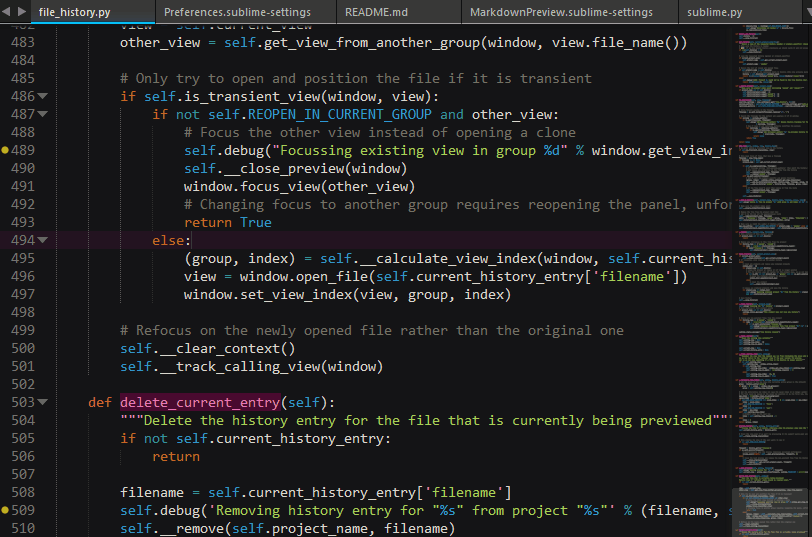File History
Provides access to the history of recently accessed files - project-wise or globally
Details
Installs
- Total 24K
- Win 13K
- Mac 7K
- Linux 5K
| Dec 16 | Dec 15 | Dec 14 | Dec 13 | Dec 12 | Dec 11 | Dec 10 | Dec 9 | Dec 8 | Dec 7 | Dec 6 | Dec 5 | Dec 4 | Dec 3 | Dec 2 | Dec 1 | Nov 30 | Nov 29 | Nov 28 | Nov 27 | Nov 26 | Nov 25 | Nov 24 | Nov 23 | Nov 22 | Nov 21 | Nov 20 | Nov 19 | Nov 18 | Nov 17 | Nov 16 | Nov 15 | Nov 14 | Nov 13 | Nov 12 | Nov 11 | Nov 10 | Nov 9 | Nov 8 | Nov 7 | Nov 6 | Nov 5 | Nov 4 | Nov 3 | Nov 2 | |
|---|---|---|---|---|---|---|---|---|---|---|---|---|---|---|---|---|---|---|---|---|---|---|---|---|---|---|---|---|---|---|---|---|---|---|---|---|---|---|---|---|---|---|---|---|---|
| Windows | 1 | 1 | 0 | 0 | 1 | 1 | 0 | 0 | 0 | 0 | 0 | 4 | 0 | 1 | 1 | 0 | 0 | 0 | 1 | 0 | 1 | 0 | 1 | 0 | 0 | 3 | 0 | 0 | 0 | 0 | 1 | 2 | 0 | 0 | 1 | 2 | 0 | 2 | 0 | 0 | 0 | 1 | 1 | 2 | 0 |
| Mac | 1 | 0 | 1 | 0 | 0 | 0 | 0 | 0 | 0 | 0 | 0 | 2 | 0 | 0 | 1 | 0 | 1 | 0 | 0 | 1 | 0 | 0 | 0 | 0 | 1 | 0 | 1 | 0 | 1 | 0 | 0 | 0 | 0 | 0 | 1 | 2 | 0 | 0 | 0 | 0 | 0 | 0 | 0 | 0 | 0 |
| Linux | 0 | 0 | 0 | 1 | 0 | 0 | 0 | 0 | 1 | 0 | 1 | 0 | 0 | 0 | 0 | 0 | 0 | 0 | 0 | 1 | 0 | 0 | 0 | 0 | 0 | 0 | 0 | 0 | 0 | 0 | 0 | 0 | 0 | 0 | 0 | 0 | 0 | 0 | 0 | 0 | 0 | 0 | 0 | 0 | 0 |
Readme
- Source
- raw.githubusercontent.com
SublimeText - File History
Sublime Text 2 and 3 plugin to provide access to the history of recently used files - project-wise or globally.
The most recently closed file can be instantly re-opened or the entire file history can be shown and filtered in a quick panel (including file preview and the ability to open multiple files).

Features
- Reopen the most recently closed file or open a quick panel of recently used files to choose from
- Display a preview of the file while browsing the quick panel (only Sublime Text 3)
- Open multiple history entries from the quick panel with the Right key
- Delete history entries from the quick panel with Ctrl + Del
- Optionally remove any non-existent files while looking through the file history (when previewed or opened) or on start-up
- Creates backups in case you lose your history
- Highly configurable through FileHistory.sublime-settings file, like excluding files with regex patterns
Installation
- Install Package Control.
- Once installed,
bring up the Command Palette
(
Command-Shift-Pon OS X,Ctrl-Shift-Pon Linux/Windows). - Select
Package Control: Install Packageand then selectFile Historywhen the list appears.
Package Control will automagically keep the plugin up to date.
Usage
To use the plugin,
open the Command Palette
and search for File History:.
When you opened a panel you can use the Right key to open the file and keep the panel open, or Ctrl/Cmd + Del to remove the selected file from the history.
For default keymap definitions, see Default (Windows).sublime-keymap (OSX).
For the available and default settings, see FileHistory.sublime-settings.
Project Settings
You can extend
the path_exclude_patterns and path_reinclude_patterns lists
in your project settings.
For this,
add a "file_history" dictionary
to your project's settings
and then one or both of the settings to that.
Example:
{
"folders": [
{
"path": "."
}
],
"settings": {
"file_history": {
"path_exclude_patterns": ["/bin/"],
"path_reinclude_patterns": ["\\.compiled$"]
}
}
}
Commands
open_recently_closed_file (Window)
Opens a popup with recently closed files
or reopens the lastly closed view
if action == "open_latest_closed".
Parameters
action (str) - Default:
"show_history", Allowed values:"show_history","open_latest_closed"current_project_only (bool) - Default:
True
cleanup_file_history (Window)
Checks the current project or the whole history for non-existent files and removes them from the history.
Parameters
- current_project_only (bool) - Default:
True
reset_file_history (Window)
Removes all history data.
